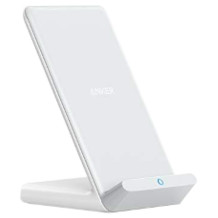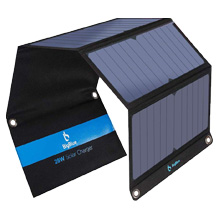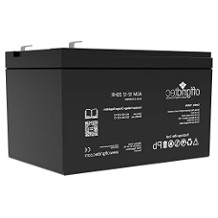Rechargeable battery charger purchasing advice: how to choose the right product
- What you need to know
- Rechargeable batteries are an environmentally friendly and economical alternative to disposable batteries.
- While simple chargers are cheap to buy, high-quality intelligent chargers ensure that batteries last longer.
- The most important functions of a good intelligent charger include trickle charging, fast charging and discharging.
- For home use, nickel-metal hydride batteries are usually best.
What do I need a charger for?
In every household, consumers use many devices that rely on the use of batteries: Torches, alarm clocks, kitchen scales, various remote controls, digital cameras, watches, electric toothbrushes and smoke detectors are just a few examples. Many use disposable batteries, also known as primary batteries, for this purpose because of their low price. However, these have to be regularly changed, renewed and disposed of accordingly. Under no circumstances should this be done with normal household waste, as batteries pollute the environment. A trip to a supermarket to pick up the empty batteries is therefore already pre-programmed at the time of purchase.
Rechargeable batteries (secondary batteries) are a long-lasting and environmentally friendly alternative to ordinary batteries. When their energy is used up, users do not have to dispose of them like normal batteries, but can recharge them in a suitable charger. A big advantage: a rechargeable battery not only protects the environment, but also the wallet. The following sample calculation shows how much money can be saved by using rechargeable batteries compared to batteries.
Saving money with rechargeable batteries – a sample calculation
With a four-pack of rechargeable batteries, about 550 batteries can be saved within five years. Assume that a four-pack of rechargeable batteries costs €10.00 and a normal battery costs €0.50:
- 0,50 € x 550 = 275 €
- 275 € – 10 € = 265 €
Even with a four-pack, consumers save over 250 euros in five years!
With such savings potential, it is well worth investing some of the money saved in a good charger. Households need such a charger to recharge their batteries regularly. Battery chargers usually get the energy they use to fill up the cells from the mains supply. When charging, the device ensures that the charging current flows in the opposite direction to that when discharging, thus reversing the chemical processes taking place in the battery. The charging current refers to the current intensity with which the battery is charged. It is expressed in amperes or milliamps. The amount of charging current depends on both the charger used and the type of battery.
What are the different types of chargers?
There are various types of chargers on the market, which differ primarily in terms of the technology used. Battery chargers are roughly divided into simple and intelligent chargers. Other special types are universal and fast chargers. Both types are presented in detail below.
Simple chargers
Simple chargers charge the inserted battery continuously until users switch off the unit or disconnect it from the power supply. All batteries to be charged are treated equally – regardless of their performance data, their battery technology and their current charge level. This means that users of a simple charger must pay attention to the required charging time so that they neither remove their batteries too early nor overcharge them. Many manufacturers of simple chargers install a simple LED indicator that lights up green as soon as the batteries it contains are fully charged. This at least prevents the batteries from being removed too early.
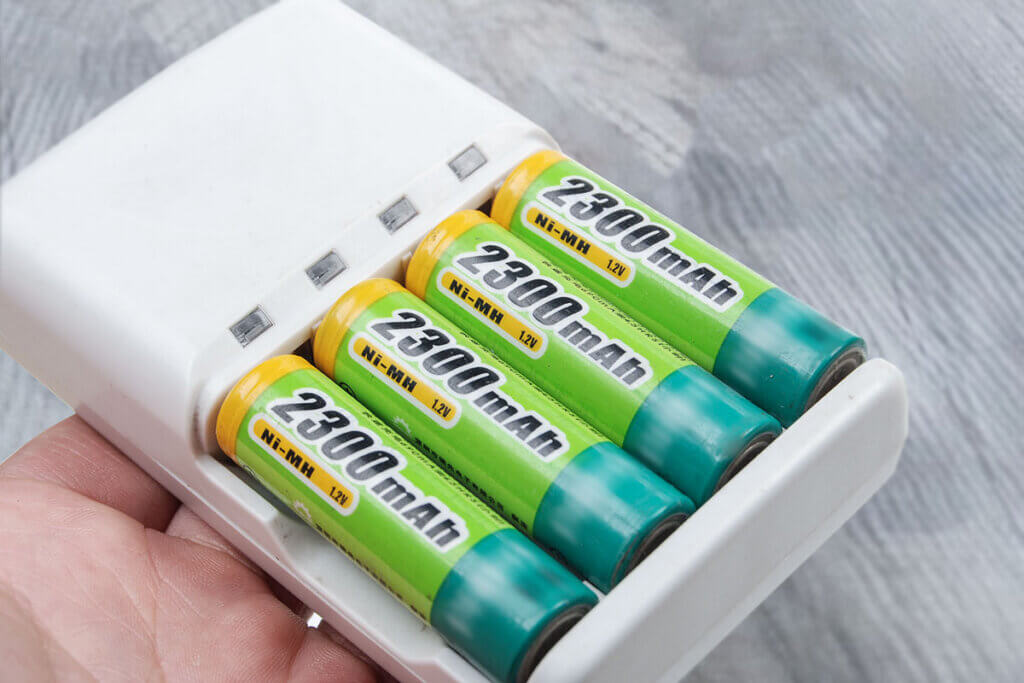
If the battery is removed too early, it is usually quickly empty again and must be reconnected to the power supply, while regular overcharging significantly reduces the number of maximum charging cycles and thus the service life. In the case of massive overcharging, gas forms in the battery, which escapes through a safety valve when the pressure is too high. Some simple chargers are equipped with a timer that ensures that the device switches off after a certain time. But even these chargers treat each battery the same and do not take into account the current charge level, so overcharging can still occur.
Pro points
- Favourable price
- Can usually be used for several cell sizes
Drawbacks
- Charging time must be observed exactly
- Danger of overcharging
Intelligent chargers
In contrast to simple chargers, intelligent chargers, also known as electronic chargers, are able to monitor the charging process with the help of a processor and thus adapt it to the current state of charge of the inserted battery. Such devices automatically stop the charging process as soon as the battery is full and switch to trickle charging so that the battery cannot discharge again.
High-quality electronic chargers are somewhat more expensive to purchase, but they have useful additional functions that can significantly extend the life of the batteries. These include, for example, special charging programmes that regenerate the cells, complete discharging before the actual charging process or individual slot monitoring. Intelligent chargers with individual slot monitoring control the voltage and often also the temperature of each battery cell individually and adjust the charging process.
Pro points
- Processor-controlled
- Protection against overcharging
- Convenient operation
- Useful additional functions
- Longer battery life
Drawbacks
- Higher price
Universal chargers
Universal chargers are characterised by the fact that they can charge different battery sizes and usually also types. They are often suitable for both nickel-cadmium and nickel-metal-hydride batteries. However, the different battery types must not be charged together. Most of these variants are simple chargers. This means that although they are cheap to buy, they offer no protection against overcharging and no extra functions, and they treat all rechargeable batteries in the same way.
Pro points
- Low price
- Can be used for several battery sizes
- Mostly suitable for NiCd and NiMH batteries
Drawbacks
- Charging time must be observed exactly
- Danger of overcharging
- Different batteries are treated in the same way
- Mostly short battery life
Fast chargers
So-called fast chargers promise particularly fast charging processes, which usually fully recharge a battery in less than half an hour. Like intelligent chargers, fast chargers are usually processor-controlled. This means that they monitor and control the charging process so that the battery is protected from overcharging. While chargers with such short charging times are very convenient, users should also be aware of one disadvantage of these devices: In order to charge a battery so quickly, very high charging currents are required, which reduce the maximum number of charging cycles when used regularly. A lithium-ion battery will even be completely destroyed at such high currents. Therefore, users of fast chargers should make sure that the battery used is labelled as fast-chargeable.
Pro points
- Processor-controlled
- Protection against overcharging
- Particularly fast charging
Drawbacks
- Higher price
- Lower number of charging cycles
- Look out for fast-charging batteries
Useful functions of battery chargers
Intelligent chargers usually have many practical additional functions. The most common functions that a good charger should have are presented in the following overview.
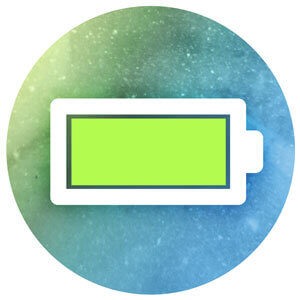
Trickle charge
Intelligent chargers switch to trickle charge as soon as the battery is fully charged. To compensate for self-discharge, the battery is supplied with enough energy to maintain its maximum performance without overcharging.
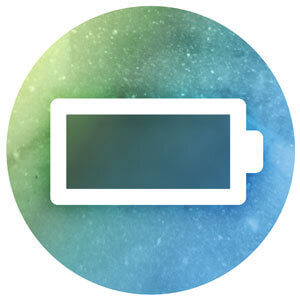
Discharge function
If consumers frequently recharge their batteries before they are completely discharged, the so-called memory effect occurs, especially with nickel-cadmium batteries, which results in a loss of capacity. To avoid this, good chargers have a discharge function that first empties the battery completely before recharging it.
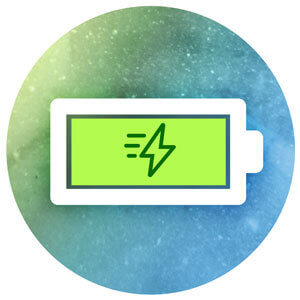
Quick-charge function
By increasing the current, certain devices can shorten the charging time considerably, so that the battery is fully ready for use again after less than half an hour. However, consumers must make sure that their batteries are also fast-chargeable.
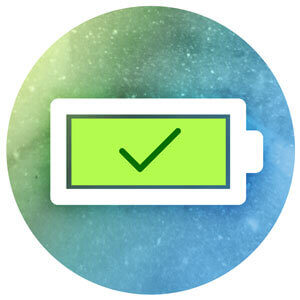
Battery tester
With this function, consumers can check the state of charge. In this way, they can quickly and easily see whether the batteries are still usable or already need to be recharged. Some chargers can also perform a capacity test. They first charge the battery before discharging it completely in order to measure its actual capacity.
Additional extras for extra convenience
In addition to the functions listed, some high-quality chargers also have practical extras. These include the following features, for example:
12-volt adapter for the car
Some chargers come with a 12-volt adapter. This is also known as a car adapter and enables the charger to be connected to the cigarette lighter and to charge batteries with the 12-volt vehicle voltage while driving.
USB charging function
Some modern chargers have a USB port or USB adapter that can be used to charge commercially available USB devices such as smartphones, tablets, MP3 players, portable game consoles or digital cameras.
Care function for stressed batteries
A care function found on particularly high-quality chargers is often called a revitalisation or refreshing programme. Such a programme serves to extend the life of the batteries and increase their performance. For this purpose, the device checks the inserted rechargeable batteries in the form of a quick test and, if necessary – for example, in the case of an older or already very frequently used rechargeable battery – starts the maintenance programme, which usually charges and discharges the battery completely several times. In this way, the device remedies, among other things, capacity losses due to the memory effect, which occurs when people frequently charge the battery before it is completely empty.
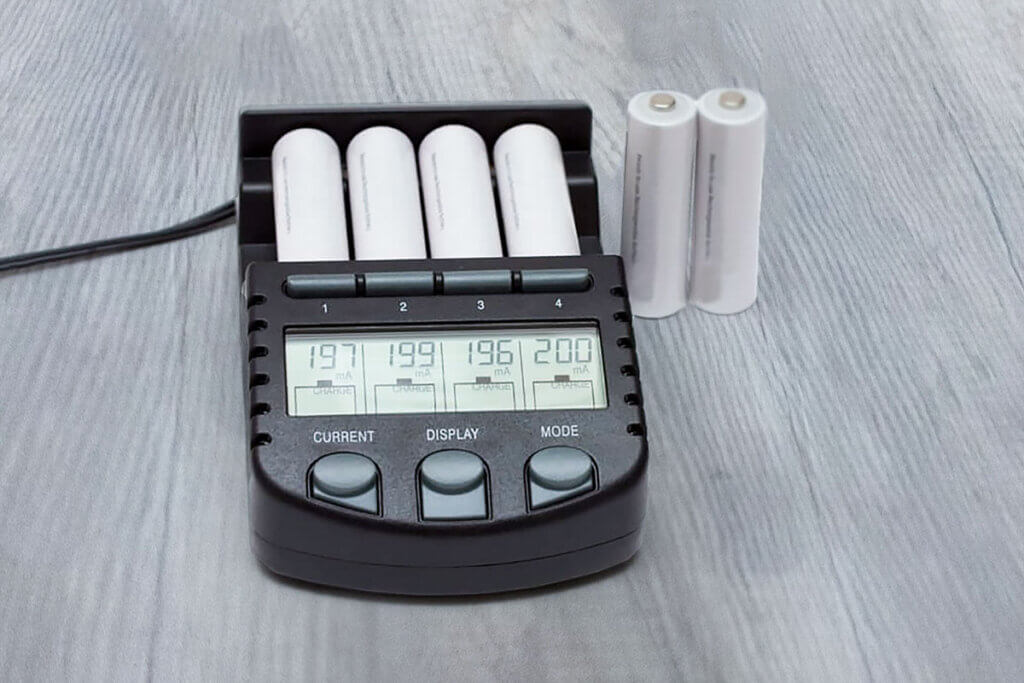
An overview of the most common types of rechargeable batteries
Even though most rechargeable batteries look the same on the outside, they are divided into different types with regard to the materials of their electrodes. The following four are among the most common types of rechargeable batteries:
- Nickel-cadmium battery (NiCd)
- Nickel-metal hydride battery (NiMH)
- Lithium-ion battery (Li-ion)
- Lithium-polymer battery (LiPo)
All battery types have their own advantages and disadvantages and are accordingly suitable for different requirements and devices. The oldest type of battery, the robust and durable NiCd battery, has been banned throughout Europe since 2007 because of the toxic cadmium. Exceptions were initially made for use in emergency and alarm systems, medical equipment and cordless power tools. However, the exemption for cordless power tools ended in 2017.
The following table gives an overview of the most important characteristics and differences of the various battery types.
| Battery type | Used since | Charge/discharge cycles | Advantages | Disadvantages | Well suited for |
|---|---|---|---|---|---|
| NiMh | 1990 | Bis zu tauUp to a thousand | High capacity, Hardly any memory effect, Low environmental impact | Heat-sensitive, High self-discharge | High current flows, Model making, Small electronic devices |
| Li-Ion | 1991 | Several hundred | High capacity, No memory effect, Low self-discharge | Highly expensive, Special charger needed, Rapid ageing | Mobile phones, Cameras, Notebooks |
| LiPo | 1999 | Several hundred | Highest capacity, Very light, Low self-discharge | Highly priced, Special charger required, Rapid ageing | Mobile phones, Model making, Notebooks |
Of the battery types, NiMH rechargeable batteries are the most suitable for household use, e.g. for operating small electronic devices such as alarm clocks, cordless telephones, shavers or digital cameras. Lithium-ion batteries and lithium-polymer batteries have a particularly high capacity and a low self-discharge rate. However, they require a special charger, are comparatively expensive and lose capacity after only two to three years due to rapid ageing through oxidation.
Different battery sizes and their designations
Both batteries and rechargeable batteries are available in different sizes and are therefore suitable for different purposes. When looking for the right size, customers come across a multitude of not very meaningful designations. For example, due to different standardisation organisations, there are several designations for one and the same battery pack. A common size designation for primary and secondary batteries is the ANSI standard (American National Standards Institute). However, this is becoming less and less important and is being replaced by the IEC standard (International Electronic Commission). This not only identifies the size of the batteries, but also includes their electronic properties and safety standards. For example, rechargeable nickel-metal hydride batteries can be recognised by the “H” in the IEC marking.
The following table provides an overview of the most common sizes, their designations, characteristics as well as their intended use and should make it easier to find the right battery.
| Designation | ANSI | IEC | Nominal voltage | Dimensions (H x Ø) | Intended use |
|---|---|---|---|---|---|
| Micro | AAA | HR03 | 1.2 Volt | 44 x 10mm | Small, portable devices |
| Mignon | AA | HR6 | 1.2 Volt | 50 x 14mm | Smaller, portable devices |
| Baby | C | HR14 | 1.2 Volt | 50 x 25mm | Larger, portable devices |
| Mono | D | HR20 | 1.25 Volt | 61 x 33mm | Larger, portable devices with high energy requirements |
| 9 V block | 1604D PP3 | HR22 | 8.4 Volt | 48 x 26 x 16mm (HxWxD) | Devices with low power consumption and high voltage requirements |
Consumers should note, however, that rechargeable batteries are not equally suitable for all appliances. Since they have a lower nominal voltage than batteries, it is not worth using them for appliances with high voltage requirements. These include, above all, older devices such as analogue cameras or blood pressure monitors. Some devices do not even work with battery operation. Also, for devices that run on a primary battery for a year or more (such as a remote control), the use of rechargeable batteries may not be a good idea because of their higher self-discharge rate. On the other hand, a low voltage level coupled with a high current consumption is a good prerequisite for using rechargeable batteries instead of batteries, for example in portable CD players or game console controllers.
The right way to handle rechargeable batteries
By taking good care of their battery packs, users can extend their lifespan. Among other things, it matters when the batteries are charged and how they are stored.
The right time to charge
The best time to charge batteries is right before use. The longer batteries are stored, the higher their self-discharge rate, so that they are partially discharged again when they are used.
Tip:
Excessive discharge of the battery can quickly lead to damage, especially with lithium batteries. Consumers can prevent this by recharging empty batteries in good time and recharging them regularly if they are stored for a long time.
Users of the widely used NiMH batteries should note that this type of battery has the problem of the memory effect. This means that if battery packs are repeatedly recharged before they are fully discharged, it can happen that even when the battery is fully charged, only as much energy is available as was consumed during the previous discharge processes. The memory effect thus reduces the battery capacity. However, it is less harmful to a battery than a deep discharge. In addition, high-quality chargers are able to eliminate the memory effect by means of a maintenance function.
The correct way to store batteries
The ideal charge level at which a battery should be stored depends on its material. Batteries with a lithium content are best stored at a level between 30 and 50 percent. For nickel-based batteries, such as the very common NiMH batteries for household use, it is recommended to store them at an even lower level – between 30 and 40 percent. However, users must always make sure that the rapid self-discharge does not lead to a harmful deep discharge.

In principle, storage at high temperatures is unfavourable. Especially batteries with lithium content can be damaged quickly. It is better to store them at room temperature or, ideally, at cooler temperatures in a cellar or refrigerator. Low temperatures have the advantage that the batteries self-discharge more slowly.
Disposing of rechargeable batteries
Even rechargeable batteries do not last indefinitely and must be disposed of at some point. Just like a battery, consumers should never dispose of a rechargeable battery in household waste. They can contain highly toxic substances such as cadmium, mercury and lead, which pollute both people and the environment when disposed of with household waste. In addition, valuable resources are lost in this way that would be recovered through recycling if they were disposed of properly. For this reason, retailers provide collection bins for the return of non-functional rechargeable batteries. Alternatively, collection points can be found at recycling centres.
Figure 1: © Xuejun li / stock.adobe.com | Figure 2-5: © FinalCheck | Figure 6: © Waldemar Milz / stock.adobe.com | Figure 7: © Olga Kostina / stock.adobe.com
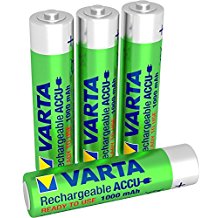
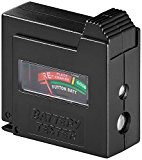
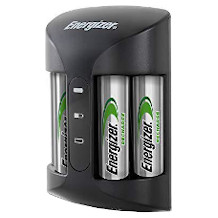
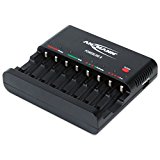
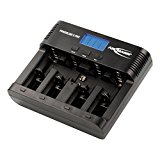
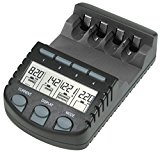

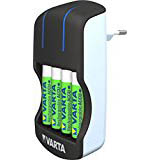
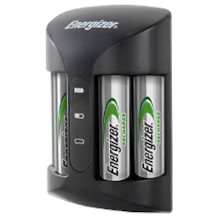


 1,776 reviews
1,776 reviews
